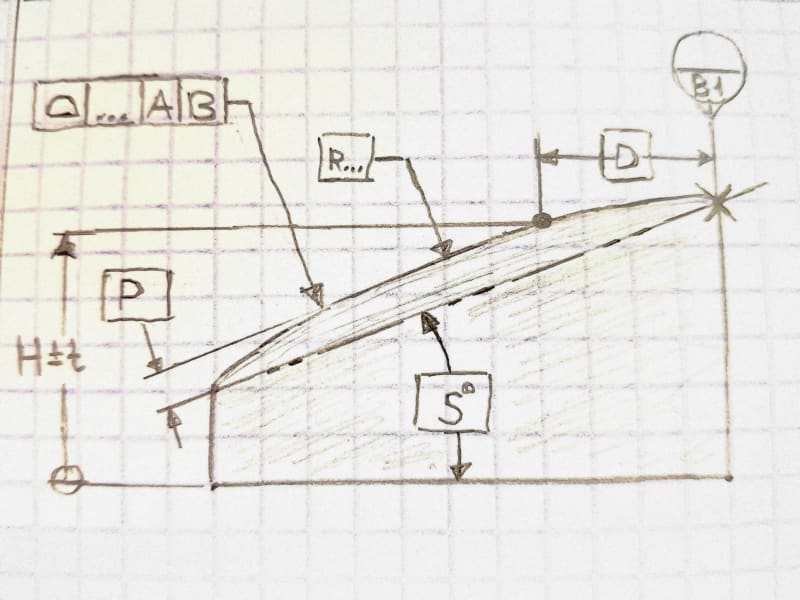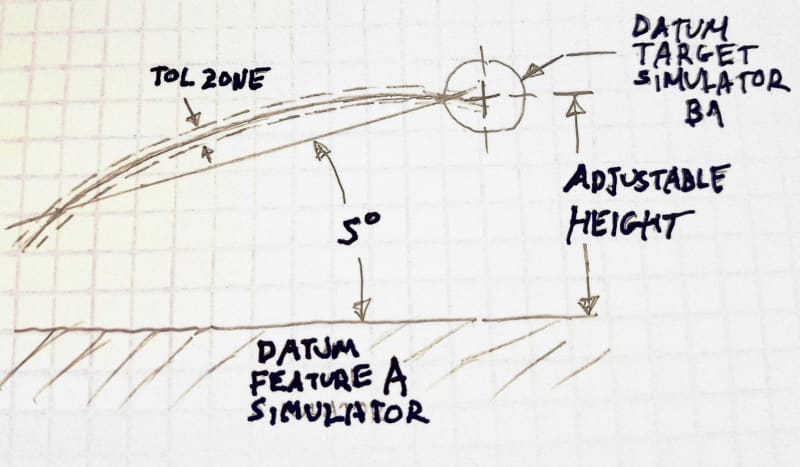Since I feel awkward and I am asking myself, why I did not keep my mouth shout (but then we wouldn't get over 70 replies with interesting figures and opinions from all the experts and committee members) I would try to justify why I think 8-27/2009 and 11-32/2018 are sort of bad examples:
Main reason: they are opening the door for (or I would better say: keep the door open) for usage outside of their (figure's) limited scope
Those figure's concepts should (maybe even "shall") be used for rFOS only. And that's about it. Keeping them in the standard creates a dangerous precedent as those figures are used as allowance (OKAY to do so) and arguments to rationalize and usage of combination between profile with ± for a non rFOS. (and that is not too add any MBD issues/needs, keep them aside for now)
Copy-paste from different discussion
"The standard allows the use of +/- tolerances in combination with Profile. You just have to be careful of how/when you do this since, if not done properly, it can be interpreted in multiple legal ways. The example shown in Figure 8-27 in the 2009 version of the standard has only one legal interpretation. The dimension that is toleranced with +/- (the 80+/-0.2) is a regular feature of size (i.e. the "correct" use of a direct tolerance) and therefore is subject to Rule #1. The Profile of a Line callout is then simply refining what Rule #1 would have allowed for that surface. It (the Profile) is essentially controlling the orientation (but not the location) of the line elements on the considered surface relative to A and B. If Profile of a surface were specified in this situation, it would essentially be controlling the parallelism of the considered surface to A (and the reference to B would be superfluous in that case).
But, why control things in this manner if the feature in question does not "act" like a feature of size in its application/function. If the part in Fig. 8-27 always gets biased up against the datum feature A as shown (as opposed to fitting into a slot and being "centered" on the 80mm width), then it would likely make more sense to specify the 80mm dimension as basic and control the considered surface orientation AND location from that datum plane. The figure, though, was not trying to contemplate whatever the truly functional requirements might have been for the part. Rather, it was simply trying to illustrate the theoretical effect of such a callout. It is certainly possible that the requirements as written are the truly functional requirements, so when you state the requirements as shown, then the, "Means this" explanation is correct."


